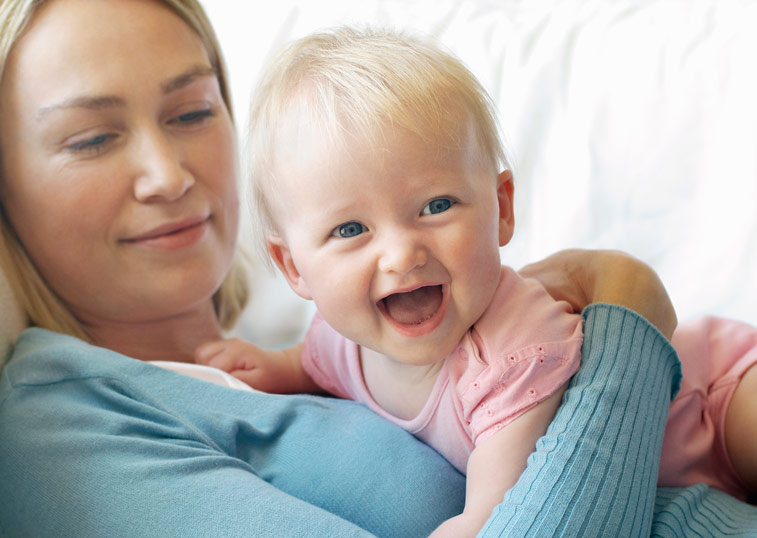What’s wrong? It’s a nervous look many new parents exchange when adjusting to having a new baby in the house.
One of the most frustrating parts for a new parent is feeling clueless about baby’s wants and needs. Even though babies cannot verbally tell you their problem, they do have the ability to express many emotions.
Here are few baby cues to help you interpret your baby’s feelings.
Smiling
Most parents like to think their baby smiles at them almost right away, but the first real smile generally occurs between 6 and 8 weeks of age. Smiles are a sign of physical contentment at first. As your baby grows, smiles are your baby’s way of showing appreciation for the people who show them love.
What to do? Encourage your baby’s smiles. Laugh and smile back and talk to your baby with positive, loving words. Even if your baby doesn’t understand the words, they do understand the love.
Gaze aversion
Occasionally, your baby may turn their face away from you. From about 2 months and on, babies need a break from eye contact if they feel overly stimulated. They may start playing with their fingers or toes or even cry as a means of breaking away.
What to do? Adults may continue to try to engage them by moving into the baby’s view or tickling or jostling to get the baby’s attention. Instead, give your baby some time to regroup and wait until they return that gaze to you. Then it’s time to interact again.
Facial expressions
Between 3 and 6 months old, most infants learn to imitate adults’ facial expressions. By 9 months, babies can see if parents are stressed. If so, they become anxious and may begin crying.
What to do? If you’re stressed, keep in mind you will pass those feelings to your baby. Consciously relax your face, take some deep breaths and even force a smile or two. Hug or show affection toward your baby to let him/her know things are all right. If you are so angry or stressed you can’t reflect calmness, ask another adult to care for your baby momentarily. Or if you are alone, put the baby in a safe place like the crib until you calm down.
Rubbing eyes or ears
When they get tired, babies rub their eyes and/or ears with their hands. Some babies just like to pull on their ears because they like the feeling.
What to do? Start getting your baby ready for sleep when you notice rubbing of the eyes, ears or face. If your baby is rubbing his/her ears, has a temperature higher than 101 degrees and is fussy, this could be an ear infection. Call your pediatrician.
Startle reflex
Babies jerk, spread their arms and legs, then quickly pull them back in and cry when they are startled. The startle reflex begins at birth and usually goes away by 2 or 3 months.
What to do? Swaddling baby with a lightweight blanket can be helpful.
Arching the back
Starting a few weeks after birth, babies will begin arching their backs when they are in discomfort. If they are doing it more frequently and crying, it may be due to reflux.
What to do? Your baby probably needs a change in position. Try to remove your baby from the carrier, car seat or stroller for few minutes and hold up right against your shoulder. Try to talk with your pediatrician if it is a continuous problem.
Hungry cry
The hungry cry is a short, low-pitched cry that lasts for a few seconds. If you do not respond, it may become louder and more intense.
What to do? Respond to your baby as quickly as possible. It will be a positive reinforcement and helps to improve the emotional bonding between you and your baby.
Pain cry
A pain cry is mostly sudden and will be a high-pitched cry. It will be continuous.
What to do? Check your baby from head to toe. Sometimes a wet diaper or tight dressing may be the clue for you.
Tired cry
Between 2 to 3 months, babies will cry with a soft variation of the pain cry when they are bored. But mostly it will happen after play, prior to sleep.
What to do? Try rocking in a chair or swaying your baby’s feet from side to side and gently stroking their head or chest. Slowly your baby will go to sleep.
Understanding your baby’s cues and responding to them makes your baby feel secure and strengthens your bond. Not all babies demonstrate all these cues. The best way to understand your baby’s cues is to spend a lot of time watching your baby’s specific actions and learning from them.
Learn more
- Baby basics for dad
- Why your baby may be crying, and tips for soothing
- Prep for baby, postpartum, and ‘fourth trimester’
…
Posted In Children's, Health Information, Parenting
